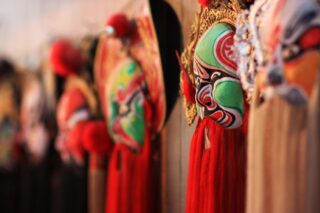Hong Kong, a vibrant metropolis that blends ancient traditions with technological innovations, recently celebrated the Chinese Opera Week. This annual celebration showcased the cultural heritage and artistic brilliance of Chinese opera, a form of theatrical performance unique to Chinese culture and traditions.
However, behind the history of this ancient genre, spans an interesting yet subdued evolution of one of the most understated music genres in China – the beautiful, short-lived Shanghainese jazz, or Shidaiqu.
The link between Chinese opera and Shanghainese jazz
Shanghainese jazz, or Shidaiqu, was born in the late 1920s, when Shanghai first opened its borders and welcomed herself to the West. It is a type of fusion music, where elements of Western jazz and Chinese folk blend together.
For instance, the famous ‘Night Shanghai’ sung by Zhou Xuan showcases one of the earliest influences in western instrumentation, with clarinets and woodwind-like instruments in Gershwin’s Rhapsody in Blue. Melodies are sung beautifully in Chinese folk opera voice, reflecting a delicate balance between Eastern and Western musicality.
One might question how the historical linkage between Chinese opera and jazz matters to us today. However, the evolution of the 1920s can be seen to exist in parallel in the contemporary world – modern music today is constantly evolving and taking on new forms – and artificial intelligence has a big role to play.
The fusion of AI and music
AI has already begun to advance in the areas of musical composition and distribution, automating and making musical production processes ever more efficient. Suno AI, for example, can instantly generate songs that are customised to an individual’s needs.
Yet, Suno AI and other AI generating platforms are still far from perfect. This is because the nuances in meanings born out of human creativity will often get lost in machine processes; the originality, the context, the intention of words and phrases get watered-down in automated translation.
AI might be good at capitalising efficiency, but at the heart of a soulful piece of work lies an artistic ingenuity and human originality that machines will never be able to fully replace.
As the AI landscape continues to evolve, it is vital for us to focus on human creativity and collaboration – new, creative ideas will become increasingly cherished as we enter an everchanging, fast-paced world.
Alex Mendham and his orchestra: Evernoon’s charity project
Evernoon’s collaboration with Alex Mendham and His Orchestra provides a unique bridge between jazz music, linguistic brilliance, and AI. The orchestra replicates precisely the era of jazz music that originated in the burgeoning city of Shanghai – dance and big band jazz. What is remarkable about the project is that the team is working on a vinyl album that bridges AI, jazz music, and translation, by transliterating English lyrics into Chinese, such as Ella Fitzgerald’s Fascinating Rhythm and Tea For Two – all delicately arranged and beautifully sung in the style of Shanghainese jazz music (Shidaiqu).
The evolution of music in China, from ancient Chinese folk opera to the vibrant Shanghainese jazz scenes and the innovative projects of the Alex Mendham Orchestra, is a testament to the power and resilience of human creativity and cultural exchange. As AI continues to advance, its potential for creative expression is only just beginning to be tapped.

